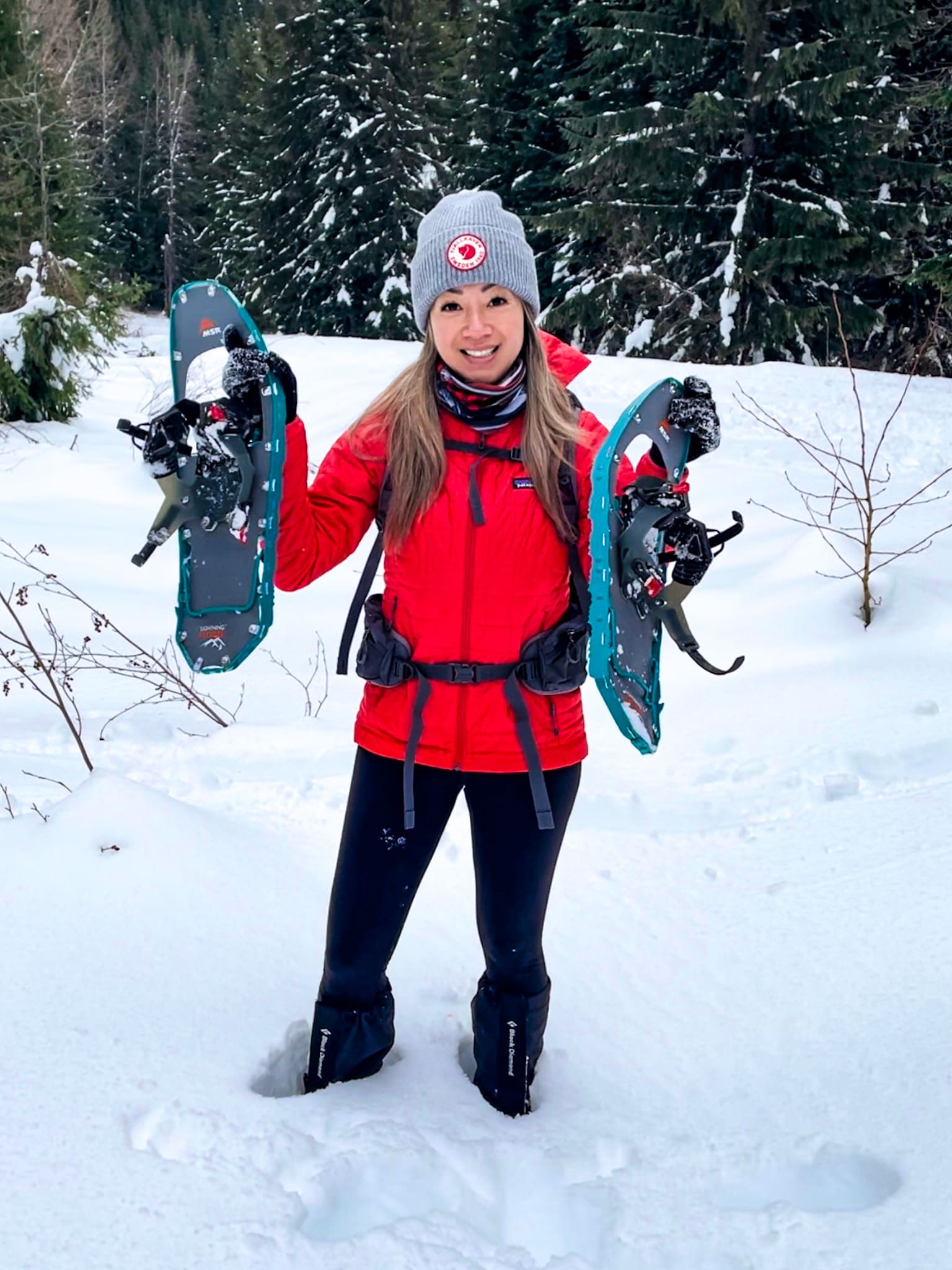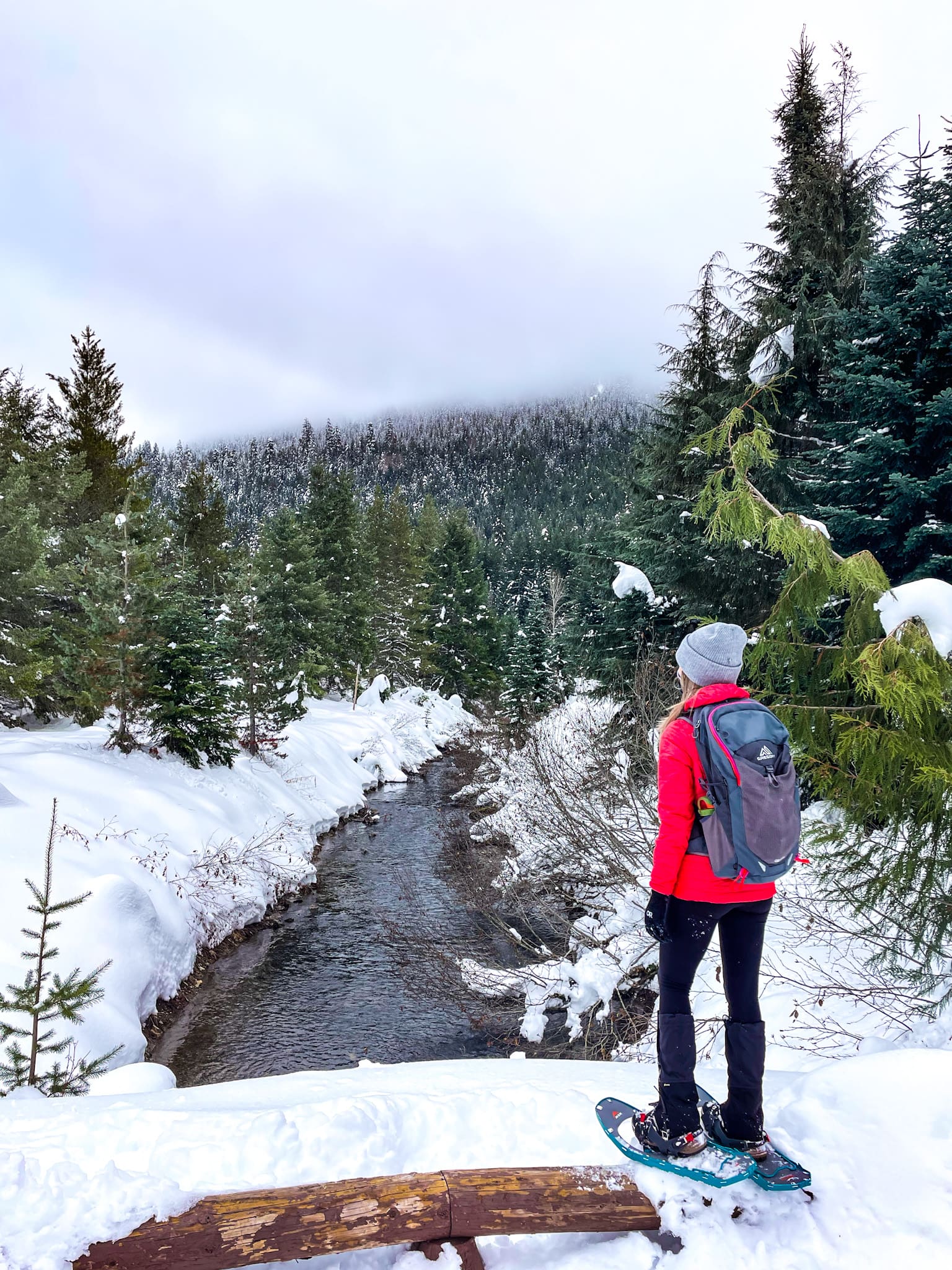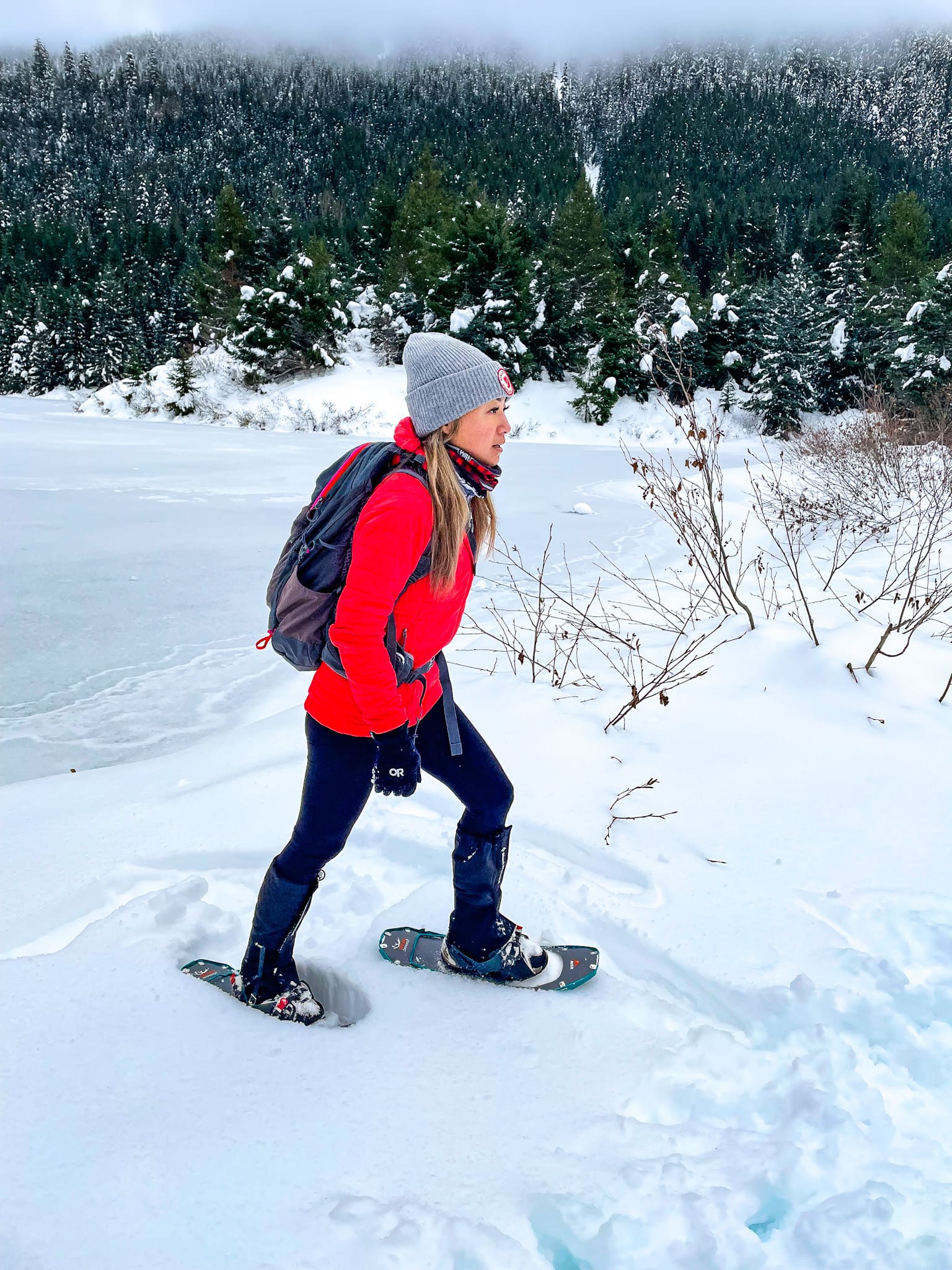What’s In My Hiking Pack: Winter Gear Edition
There really is some truth to the saying, “There is no bad weather, only bad gear”! For many people, venturing outdoors in the dead of winter can be intimidating or even unpleasurable. There are also greater risks with colder weather such as hypothermia & frostbite. But with the proper clothing & equipment, you can enjoy any activity no matter what Mother Nature throws at you on your path! While the mass of crowds flock to popular trails during warmer summer months, I get more excited for the peace & solitude that comes with snowfall. The sensory experience changes dramatically when winter comes full circle. In this blog post, I share my top winter hiking gear essentials that I always have ready to go for all my snow adventures!

Please note: This post contains affiliate links.
This means that, at no extra cost to you, I may receive a small commission if you make a purchase through my affiliate link.
You may read my full disclosure policy here.
Winter Hiking & Snowshoeing Equipment
Insulated & waterproof boots.
Key winter hiking gear to help keep your feet warm & dry during snowy hikes is proper footwear. All year round, I swear by my Danner Mountain 600 hiking boots. However, this winter I upgraded to their weatherized version which features premium insulation to protect my toes from freezing. The new pair also has upgraded Vibram megagrip traction to keep you from slipping on icy conditions. While the original Mountain 600 boots are made of high quality waterproof suede, this seasonal pair has premium full-grain leather that is so durable it can tackle the toughest of trails! If you plan on purchasing a winter specific hiking boot, I suggest trying on a half size up to accommodate for thicker wool socks.
Microspikes for icy conditions.
Even heavy duty boots can easily lose grip on steep icy trails. For sketchy conditions like these, where the snow is compact, the best way to gain better traction is with microspikes. I’ve had my Kahtoola MICROspikes for over 10 years & I cannot rave enough about them! The stretchy harness system is so easy to slip on even over the thickest boots. It is compact enough to stuff into any pocket & comes in its own tote sack for easy storage!
Snowshoes for deep, powdery conditions.
On more even ground with powdery snow, snowshoes will be your best bet. The wide footprint of the snowshoe is designed to prevent you from sinking into deep snow piles. My absolute favorite pair are the MSR Lightning Explore Snowshoes for their easy ratchet system that allows for quick on-the-go adjustments! They even feature useful heel lifts to reduce fatigue on inclines!

Gaiters.
Every time I hike in wet weather, I end up with dirt & mud caked on the back of my calves. Therefore, my must-have winter hiking gear includes gaiters which act as waterproof covers for my boots to keep my legs dry. There are a variety of brands & styles to choose from. But my personal favorite are the Black Diamond GTX FrontPoint Gaiters for its super durable GORE-TEX shell & ultra lightweight packability! Keep in mind, if you plan on wearing waterproof pants, gaiters may not be necessary unless you want that extra protection.
Trekking poles.
For more stability on tricky terrain, a good sturdy pair of trekking poles can act as another set of limbs. Hiking with poles can help you keep your balance when navigating snowfields & ice patches, as well as when going up or down on powdery hills. Another main reason why I started utilizing trekking poles more is to reduce force on my lower body. I personally struggle with ongoing sciatica & my adjustable trekking poles help to absorb some of the shock from rough hikes. There are a variety of styles available with different grip material & wrist straps. When hiking in deep snow, you should switch out the tips with snow baskets to keep your poles afloat!

Winter Hiking Clothing
Winter hiking base layer.
Wearing layers of clothing that you can easily throw on or take off is essential to a comfortable hike. For extreme winter conditions, I prefer a baselayer top that is made of breathable wool. For moderate weather, any sweat-wicking long sleeve shirt will do. The key is to avoid cotton material as it soaks up moisture, takes a long time to dry, & can actually lead to hypothermia.
Winter hiking insulating mid layer.
On top of the base layer you will want to wear a mid layer to retain your body heat, such as a lightweight puffer jacket. I have the Patagonia Nano Puff Jacket in a rainbow of colors because I swear by its incredible thermal insulation! The outer shell is made of windproof & durable water repellent (DWR) material so it protects me from any wintry condition! I especially like that its not bulky as with many down jackets & can be easily packed away in its own stuff sack pocket! Having an additional mid layer, like the Patagonia R1 Pullover, is also a good idea so you can adjust to the conditions during breaks & at the summit.
Winter hiking outer shell layer.
When rain or wet snow is in the weather forecast, I bring along an outer layer shell for further protection from the harsh elements. The Patagonia Torrentshell Jacket has never failed me with its snag-free adjustable closures & full hood with laminated visor.
Winter hiking pants.
When it comes to pants for winter hiking, it’s all about personal preference. I practically live in my yoga pants. So even in the snow, you’ll find me in my prAna Transform 7/8 Legging for its supportive compression fabric or the prAna Ice Flow Legging for extra warmth. I also love prAna’s ReZion collection that features adventure-ready styles made of recycled fabrics & special DWR coating for waterproof protection. My favorites include their updated prAna Halle Pant II and the more casual prAna Halle Jogger II.
Because I always rely on my gaiters, I don’t worry about getting my legs wet. However, you may also choose to wear a base layer bottom or long thermal underwear paired with snow pants. Keep in mind, insulated pants for skiing & snowboarding may limit your range of motion when hiking up steep inclines.


Winter Hiking Accessories
Winter gloves.
Nothing feels more miserable on a winter hike than frozen fingers with loss of sensation. It can be pretty debilitating when you’re trying to grasp your trekking pole or enjoy a snack at the top of a summit! I’ve learned the hard way that high quality GORE-TEX insulated gloves with fleece lining is worth investing in. Even if I start off on the trail with lightweight wool gloves, I will always have the heavy duty ones in my pack.
Wool socks.
In addition to proper footwear, wool hiking socks can take you a long way by preventing painful blisters as well as keeping your feet warm & dry. In my opinion, merino wool is the best because they are breathable, moisture-wicking, & odor-resistant. It is always a good idea to carry an extra pair in case your first ones get wet.
Neck gaiters & beanies.
Neck gaiters, or buffs, are multi-functional headwear that can keep you cool in the summer & warm in the winter. I like to wear mine around my neck to protect it from cold wintry breezes & use it to cover my nose when temperatures drop. The merino wool is not too thick so I can easily breathe through it while huffing & puffing on a chilly hike.
Beanies are also a winter hiking gear essential to protect your head & keep your ears from freezing. We actually lose a lot of body heat through the top of our heads, so wearing a beanie can help retain that warmth.
Other Winter Hiking Essentials
Winter hikes typically take more time as you navigate your way through snow & ice covered trails. Even snowshoeing itself hinders your normal gait & may take longer to complete a hike, so it is important to keep that in mind when planning your trip. With the sun setting earlier in the day, be prepared for the unexpected with the following winter hiking gear:
- Headlamp
- Handheld GPS system
- Hand warmers
- Basic first aid kit
- Portable backpacking stove
- Extra snacks & warm water in a thermal bottle
- Hiking daypack to carry all the winter gear
- If you’re heading into avalanche territory, I also recommend carrying an ice axe, snow shovel, & avalanche probe.



Thomas
September 6, 2023 at 11:28 amPreparing for winter hikes? 🏔️❄️ Discover essential gear and tips in ‘What’s In My Hiking Pack: Winter Gear Edition.’ Ready to stay warm and conquer those frosty trails!